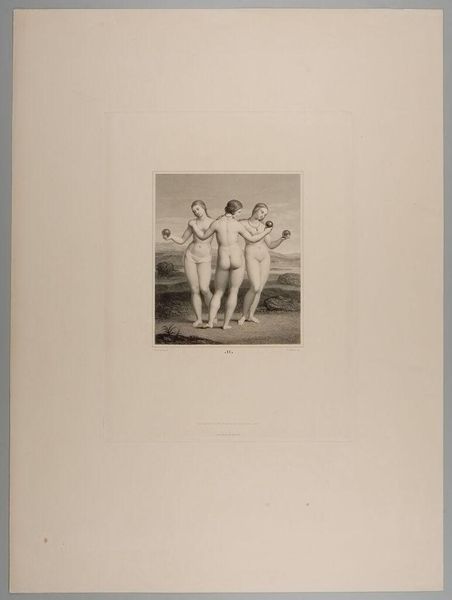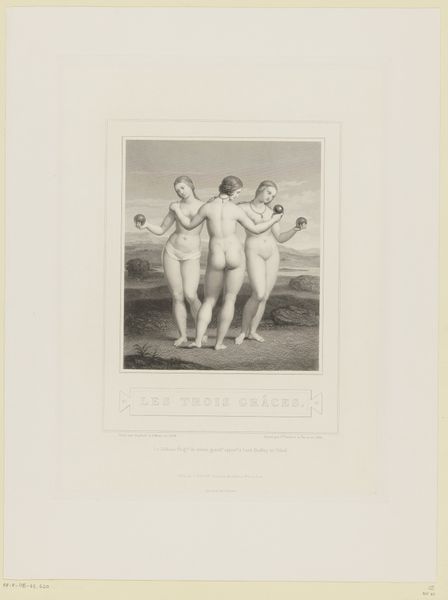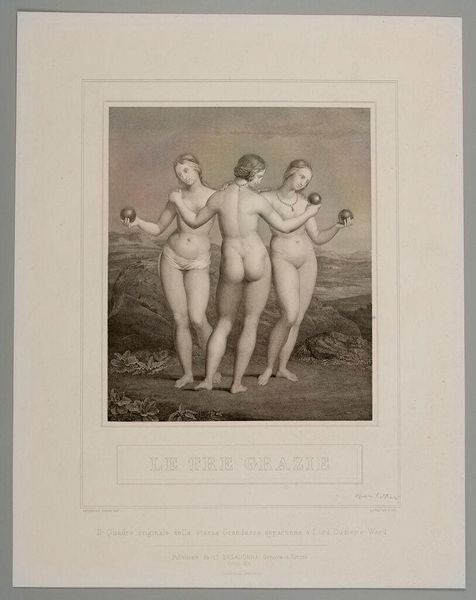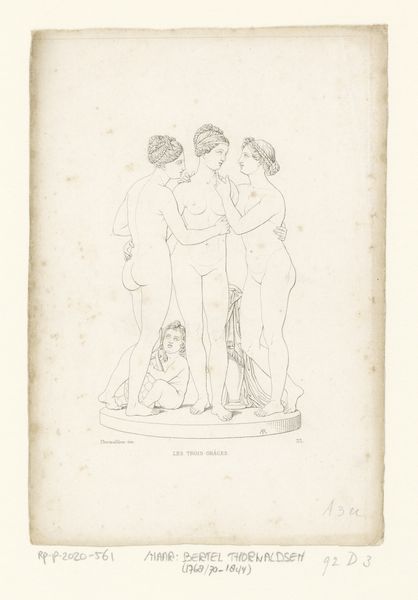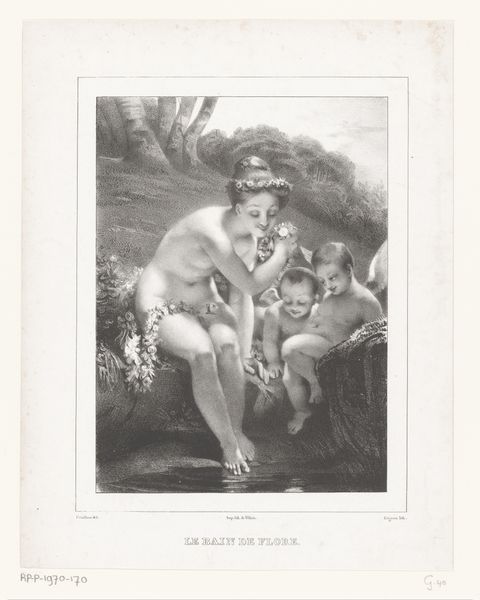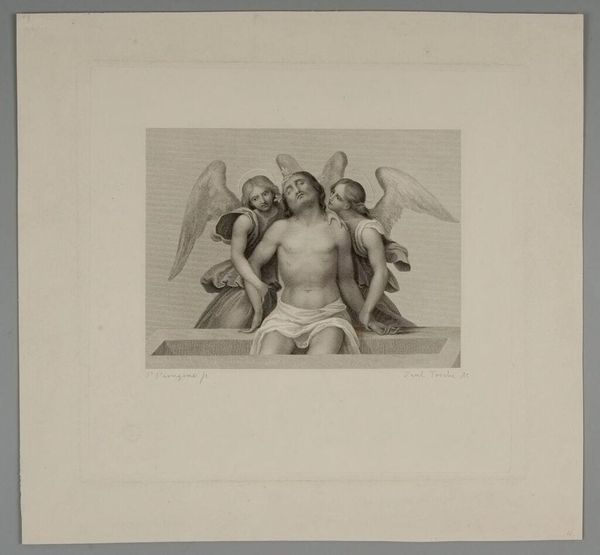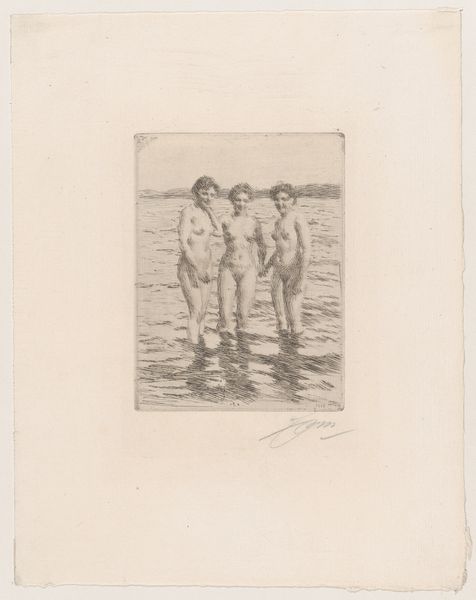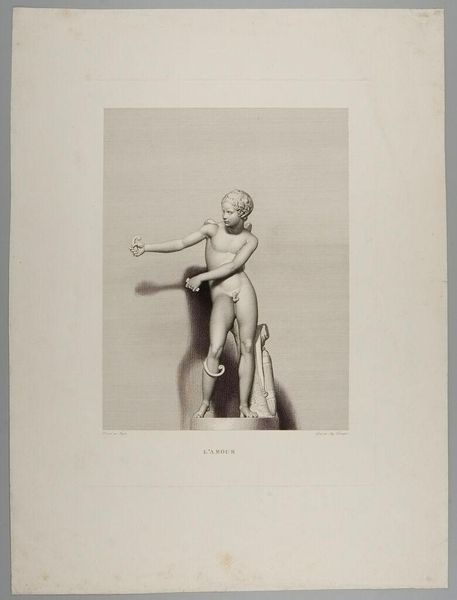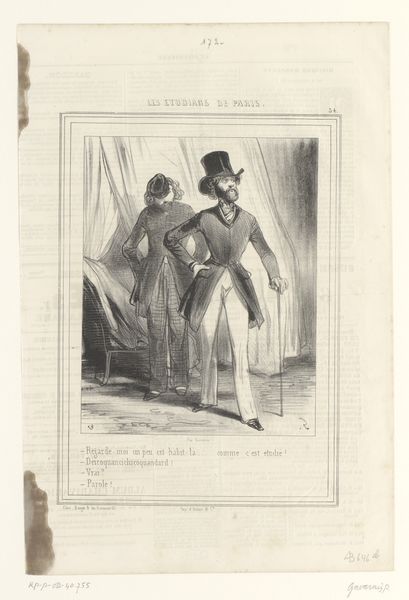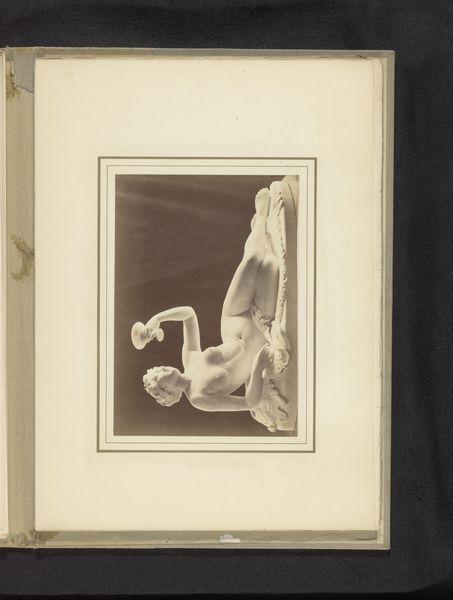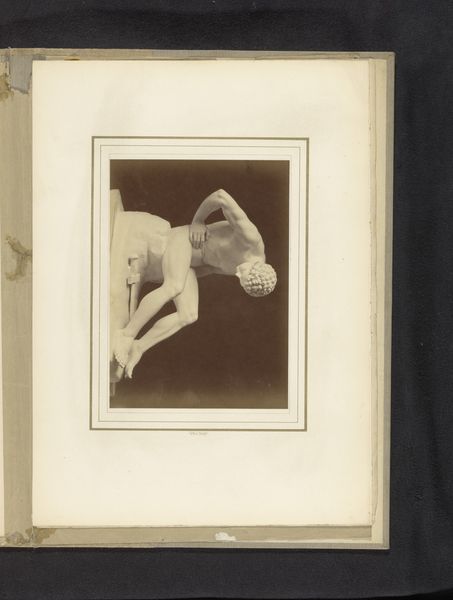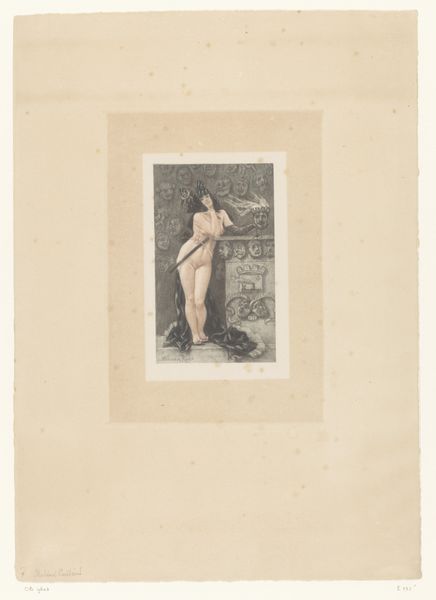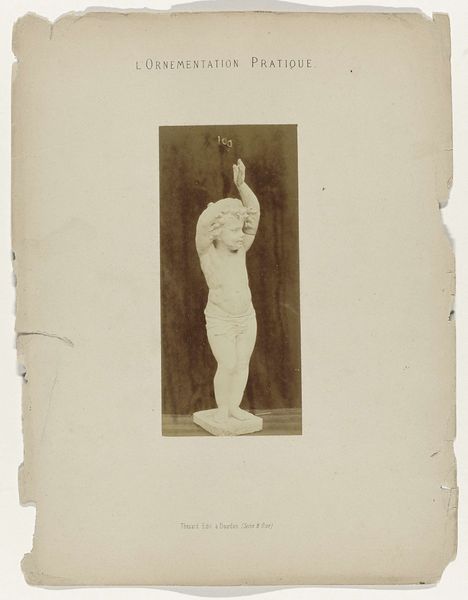
Copyright: CC0 1.0
Curator: Looking at the print titled "The Three Graces" by François Forster, currently residing at the Harvard Art Museums, I'm struck by its delicate balance. What do you make of it? Editor: Immediately, I notice the figures appear strikingly detached from each other despite the intimate embrace. There's a sense of vulnerability in their nudity, but also a defiance in their gazes. Curator: It's fascinating how Forster presents this classical subject. The Graces, often symbolizing beauty, charm, and joy, are rendered with a certain cool detachment. The landscape is minimal, drawing all focus to the figures themselves. Editor: Yes, and the absence of obvious markers of identity makes them feel more like archetypes, prompting us to question the societal forces that dictate standards of beauty. How do these idealized forms reflect the realities of women in the public sphere? Curator: That's precisely the tension Forster seems to be playing with—idealized form versus the tangible world. It's a reminder of how artistic representations both reflect and shape cultural values. Editor: Indeed, prompting us to consider the power dynamics inherent in the gaze, and the ways in which art can both reinforce and subvert those power structures. Curator: An important reminder to look critically at the stories told through art. Editor: And to question whose voices are centered in those narratives.
Comments
No comments
Be the first to comment and join the conversation on the ultimate creative platform.
